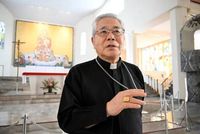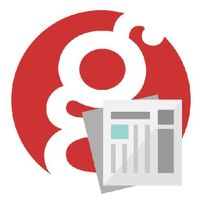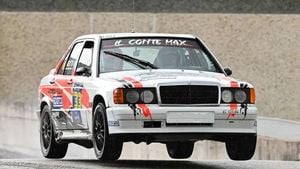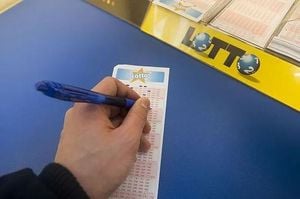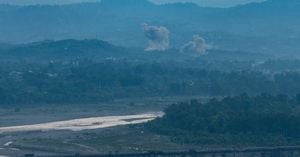The election called 'Conclave' to decide the next Roman Pope began on May 7, 2025, in the Vatican. This significant event involves 133 archbishops, including Archbishop Maeda Manyo from Shin-Kamigoto Town, Japan. To be elected as the new Pope, a candidate must secure at least two-thirds of the votes from the attendees.
The conclave is held in the famous Sistine Chapel, a location steeped in history and artistry, where Michelangelo's masterpiece, 'The Last Judgment,' adorns the walls. The chapel will remain closed to the public during the voting process, ensuring a private and solemn atmosphere for the decision-making.
As the voting takes place, the anticipation builds around the outcome. If a new Pope is elected, white smoke will emerge from the chimney of the chapel, signaling to the world that a decision has been made. This traditional method of announcing the election results has been a hallmark of papal conclaves for centuries.
Archbishop Maeda, who continues his role at the Osaka Takamatsu Cathedral, is one of the prominent figures in this conclave. His responsibilities extend beyond the cathedral, covering jurisdictions from Nagoya to Chushikoku. He frequently travels to the Vatican for various ceremonies and meetings, often bringing pilgrimage groups from Japan.
In a notable instance, Maeda celebrated Pope Francis' birthday with him, presenting a cake alongside fellow pilgrims from Japan. "I’m in the English group. At theological schools in Japan, classes were taught in Latin until the generation above me, but after that, it became Japanese," he explained, reflecting on the evolution of language in religious education.
As part of the Vatican's Secretariat for Communications, Maeda also participates in archbishop meetings, which have increasingly moved online in recent years. While crucial decisions, such as the Pope's funeral, are still made in person, the results are promptly shared via email. This shift to digital meetings reflects broader trends in communication and collaboration within the church.
The conclave's secrecy and the gravity of the occasion have drawn attention not only from the faithful but also from the media and the public. The last conclave, which took place in 2013, resulted in the election of Pope Francis, who has since made significant impacts on the Catholic Church. The current conclave, however, is unique as it follows the passing of Pope Francis, leaving a significant vacancy in the papacy.
With the conclave underway, many are reflecting on the qualities they hope to see in the next Pope. Some are calling for a leader who can address contemporary issues, such as climate change, social justice, and the ongoing challenges posed by the COVID-19 pandemic. The expectations are high, and the stakes are even higher, as the next Pope will guide the Catholic Church through uncertain times.
As the archbishops cast their votes, the world watches closely. The conclave serves not only as a religious election but also as a moment of unity and reflection for Catholics worldwide. The anticipation of the white smoke has become a symbol of hope and renewal within the church.
In addition to Archbishop Maeda, the list of voters includes Archbishop Kikuchi Isao, another notable Japanese figure in the church. This representation highlights the growing influence of Asian clergy within the Vatican, a trend that many see as essential for the global church's future.
As the conclave proceeds, discussions about the future direction of the Catholic Church are taking place not just in the Vatican but across the globe. Many Catholics are eager to see how the next Pope will address pressing moral and ethical issues while maintaining the church's traditions.
The conclave is expected to last until a new Pope is chosen, which could take several days. The process is rigorous, with multiple rounds of voting required to reach a consensus. The archbishops are tasked with not only selecting a leader but also ensuring that the choice reflects the values and beliefs of the Catholic community.
As the world awaits the outcome, the conclave stands as a testament to the enduring significance of the papacy. It is a reminder of the church's historical roots and its potential for future growth and adaptation in a rapidly changing world.
In the days leading up to the conclave, various media outlets have shared insights and analyses about potential candidates and the issues at stake. The excitement surrounding the event is palpable, and many are engaging in discussions about what the future may hold for the Catholic Church.
The conclave not only marks a pivotal moment in the church's history but also serves as a reminder of the power of faith and community in navigating challenges. As the archbishops gather to make this crucial decision, they carry with them the hopes and prayers of millions around the world.
In summary, the conclave that began on May 7, 2025, represents a significant moment for the Catholic Church. With 133 archbishops voting in the Sistine Chapel, the world awaits the emergence of white smoke from the chimney, signaling the election of a new Pope. The outcome will undoubtedly shape the future of the church and its role in addressing contemporary issues.
